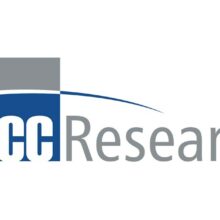Latest Study Forecasts Global Diabetes Therapeutics and Diagnostics Market to Surge to $132 Billion by 2028, Growing at a 5.2% CAGR
BOSTON, Jan. 16, 2024 /PRNewswire/ — The global market for diabetes therapeutics and diagnostics is experiencing remarkable growth, poised to reach $132.0 billion by 2028. Fueled by increasing diabetes prevalence and technological advancements, this market is at the forefront of healthcare innovation. In this overview, we explore the key factors propelling its expansion, highlighting the intersection of research, pharmaceutical development, and diagnostic technologies shaping the landscape of diabetes management worldwide. Join us as we navigate the dynamic trends and impactful solutions driving the global markets for diabetes therapeutics and diagnostics.
“According to the latest research study, the demand for Global Markets for Diabetes Therapeutics and Diagnostics to increase from $102.2 billion in 2023 to reach $132.0 billion by 2028, at a compound annual growth rate (CAGR) of 5.2% from 2023 through 2028.”
This comprehensive report delves into the far-reaching implications of current trends within the diabetes therapeutics and diagnostics market, offering insights into the market’s size, growth trajectory, and its impact on both global and key national markets. A thorough exploration of pharmaceutical and medical industry players is provided, including profiles of industry leaders and updates on mergers and acquisitions. The report further includes a detailed discussion on competitive intelligence, innovative technologies, market dynamics, and regional opportunities. Notably, it furnishes five-year global sales forecasts for leading drug and device categories, complemented by country-level breakdowns. The analysis extends to major players’ recent developments and product portfolios, with a keen focus on patent analysis to highlight technological trends across the U.S., Europe, and Japan. The market analysis culminates in estimates of the compound annual growth rate (CAGR) for the diabetes therapeutics and diagnostics market. Geographically, the report segments the global market into North America, Europe, Asia-Pacific, and the Rest of the World, utilizing 2022 as the base year for market estimates, projecting through year-end 2028.
The Diabetes Delivery Devices segment has experienced exceptional growth, particularly fueled by technological advancements like implantable insulin delivery pumps and external insulin pumps. Notably, the integration of wireless technology and miniaturization in medical device components is anticipated to spur innovation in diabetes care devices, thereby propelling market growth throughout the forecast period. The adoption of cutting-edge technologies such as 3D printing, artificial intelligence, and big data analytics in device manufacturing is contributing to reduced operating costs and enhanced product quality. Within the Asia Pacific region, India stands out with the highest growth rate, propelled by supportive government policies, increased awareness about diabetes, and the presence of dedicated associations and societies for diabetes control and monitoring. This growth trajectory positions India as a key player in the region, potentially surpassing the pace observed in the U.S. and other nations in the Asia Pacific region.
Discover More: Dive into the Details of the Global Markets for Diabetes Therapeutics and Diagnostics Market’s Growth Trajectory and Future Prospects. Click Here to Learn More
Driving forces behind the global markets for diabetes therapeutics and diagnostics market’s insights growth comprises:
- Increasing incidence & prevalence of diabetes- The increasing incidence and prevalence of diabetes globally have become a significant public health concern. The World Health Organization (WHO) estimates that the number of people with diabetes has risen sharply over the past few decades, reaching an alarming prevalence. Factors such as sedentary lifestyles, unhealthy dietary habits, and rising obesity rates contribute to the surge in diabetes cases. The condition not only poses immediate health risks but also leads to long-term complications such as cardiovascular diseases, kidney failure, and blindness. The economic burden of diabetes on healthcare systems is substantial, emphasizing the urgent need for effective preventive measures, education, and accessible healthcare resources to address and manage this growing health crisis.
- Changing lifestyle habits- Changing lifestyle habits have emerged as a key factor influencing health outcomes worldwide. In recent decades, a shift towards sedentary routines, poor dietary choices, and increased stress levels has significantly impacted public health. Sedentary lifestyles, characterized by reduced physical activity, contribute to the rising incidence of health issues such as obesity, cardiovascular diseases, and diabetes. Unhealthy dietary habits, often marked by high consumption of processed foods and sugary beverages, further exacerbate these health concerns. The modern pace of life, with heightened work-related stress and irregular sleep patterns, also plays a role in compromising overall well-being. Recognizing the impact of lifestyle choices on health, there is a growing emphasis on promoting healthier habits through education, awareness campaigns, and policy interventions to foster positive changes in daily routines and improve long-term health outcomes.
- Growing geriatric population– The growing geriatric population represents a significant demographic shift with profound implications for healthcare systems worldwide. As advancements in healthcare contribute to increased life expectancy, the proportion of elderly individuals is on the rise. This aging demographic trend is associated with a higher prevalence of chronic conditions and age-related health issues, placing additional demands on healthcare infrastructure and resources. Conditions such as cardiovascular diseases, osteoporosis, and neurodegenerative disorders become more prevalent in older age groups, necessitating specialized and comprehensive healthcare services. Addressing the unique healthcare needs of the elderly, including preventive measures, specialized medical care, and social support systems, becomes crucial in ensuring a healthy and dignified aging process for this expanding segment of the population. The phenomenon of a growing geriatric population underscores the importance of proactive healthcare planning and strategies to meet the evolving needs of an aging society.
- Increase in prevalence of chronic diseases- The increase in the prevalence of chronic diseases represents a global health challenge, with far-reaching implications for individuals, healthcare systems, and economies. Chronic diseases, such as heart disease, diabetes, and respiratory conditions, have become more prevalent due to factors like aging populations, changing lifestyles, and environmental influences. These conditions often require long-term management and care, placing a substantial burden on healthcare resources. The rise in chronic diseases not only impacts the quality of life for affected individuals but also contributes significantly to healthcare costs. Prevention and early intervention strategies, along with lifestyle modifications, are crucial in mitigating the growing burden of chronic diseases. Addressing this trend requires a comprehensive and coordinated approach, involving public health initiatives, medical research, and innovative healthcare delivery models to promote healthier living and enhance the management of chronic conditions on a global scale.
Request a Copy of the Global Markets for Diabetes Therapeutics and Diagnostics
Report Synopsis
|
Report Metrics
|
Details
|
|
Base year considered
|
2022
|
|
Forecast Period considered
|
2023-2028
|
|
Base year market size
|
$97.3 billion
|
|
Market Size Forecast
|
$132.0 billion
|
|
Growth Rate
|
CAGR of 5.2% for the forecast period of 2023-2028
|
|
Segment Covered
|
Product Group, End-User, and Region
|
|
Regions covered
|
North America, Europe, Asia-Pacific, and Rest of the World (RoW).
|
|
Countries covered
|
U.S., Canada, Mexico, France, Germany, U.K., Italy, Spain, China, India, and Japan
|
|
Key Market Drivers
|
• Increasing incidence & prevalence of diabetes
• Changing lifestyle habits
• Growing geriatric population
• Increase in prevalence of chronic diseases
|
The Rising Demand for Global Markets for Diabetes Therapeutics and Diagnostics:
The escalating demand for global markets in diabetes therapeutics and diagnostics is indicative of the increasing prevalence of diabetes and the imperative for advanced healthcare solutions. With the market projected to reach $132.0 billion by 2028, the surge is fueled by a combination of technological innovations, heightened awareness, and the continuous pursuit of more effective treatment and diagnostic options. The escalating demand is not only a testament to the growing burden of diabetes but also underscores the vital role of pharmaceutical advancements and diagnostic technologies in addressing this global health challenge. As countries grapple with rising diabetes rates, the demand for cutting-edge therapeutics and diagnostics is a driving force propelling this market’s growth, emphasizing the urgent need for comprehensive solutions to better manage and combat the diabetes epidemic on a worldwide scale.
Trends and Innovations:
The landscape of global markets for diabetes therapeutics and diagnostics is shaped by dynamic trends and ongoing innovations. Notably, the Diabetes Delivery Devices segment has witnessed remarkable growth, propelled by technological advancements like implantable insulin delivery pumps and external insulin pumps. The integration of wireless technology and miniaturization in medical device components is fostering innovation in diabetes care, while 3D printing, artificial intelligence, and big data analytics are driving manufacturing efficiency. Amidst these trends, India stands out in the Asia Pacific region with the highest growth rate, supported by government policies, heightened diabetes awareness, and dedicated associations. These trends underscore a transformative era in diabetes management, where technological advancements and strategic initiatives converge to address the evolving needs of patients and healthcare systems globally.
Challenges and Opportunities:
The global markets for diabetes therapeutics and diagnostics present a landscape of both challenges and opportunities. The increasing prevalence of diabetes poses a substantial challenge to healthcare systems globally, necessitating innovative and scalable solutions. Rising healthcare costs, coupled with the complexities of managing chronic conditions, contribute to the challenges faced by the industry. However, within these challenges lie significant opportunities for growth and improvement. Technological advancements offer the potential for more efficient and effective diabetes management, from innovative therapies to advanced diagnostic tools. Additionally, the growing awareness of diabetes and proactive government policies present opportunities for market expansion, especially in regions like India, where a higher growth rate is anticipated. Successfully navigating these challenges and leveraging the opportunities can lead to transformative breakthroughs in diabetes care, benefiting both patients and the broader healthcare ecosystem.
This report on the Global Markets for Diabetes Therapeutics and Diagnostics provides comprehensive insights and analysis, addressing the following key questions:
- What are the anticipated dimensions and expansion pace of the diabetes therapeutics and diagnostics market?
The market is expected to witness an increase from $97.2 billion in 2022 to $132.0 billion by 2028, with a compound annual growth rate (CAGR) of 5.2% throughout the forecast period.
- What factors contribute to the growth of the diabetes therapeutics and diagnostics market?
The market is experiencing growth driven by the increasing incidence and prevalence of diabetes, advancements in technology related to diabetes treatment and diagnostics, and strategic initiatives undertaken by major players in developed nations.
- What divisions are included in the diabetes therapeutics and diagnostics market?
The market is categorized based on product group, end-user, and region.
- Which segment is projected to lead the market by the conclusion of 2028 in terms of product groups?
The Diabetes Therapeutics segment is anticipated to dominate the market by the end of 2028.
- In the diabetes therapeutics and diagnostics market, which region commands the greatest market share?
North America boasts the highest market share in this sector.
- Which companies or players are prominent in the diabetes therapeutics and diagnostics market?
Key players in the market encompass Novo Nordisk A/S, Lilly, Boehringer Ingelheim International GmbH, AstraZeneca, Abbott, Merck & Co., Inc., Sanofi, Dexcom, Inc., Medtronic, and others.
Some of the Key Market Players Are:
- 77 ELEKTRONIKA KFT.
- ABBOTT
- ALTUCELL
- ASCENSIA DIABETES CARE HOLDINGS AG.
- ASTRAZENECA
- B. BRAUN SE
- BIOCON
- BOEHRINGER INGELHEIM INTERNATIONAL GMBH
- DANAHER
- DEXCOM INC.
- EMBECTA CORP.
- INSULET CORPORATION.
- JOHNSON & JOHNSON SERVICES INC.
- LIFESCAN IP HOLDINGS LLC
- LILLY
- MEDTRONIC
- MENARINI GROUP (A. MENARINI DIAGNOSTICS S.R.L)
- MERCK & CO. INC.
- MERCK KGAA
- NEXTCELL PHARMA AB
- NIPRO
- NOVA BIOMEDICAL
- NOVARTIS AG
- NOVO NORDISK A/S
- ROCHE (F. HOFFMANN-LA ROCHE LTD)
- SANOFI
- TAKEDA PHARMACEUTICAL COMPANY LIMITED.
- TANDEM DIABETES CARE INC.
- TERUMO CORPORATION
- YPSOMED AG
Browse More Related Reports:
Global Markets for Stem Cells: The global market for stem cells is characterized by dynamic advancements in regenerative medicine, offering promising avenues for therapeutic applications. Stem cells, known for their unique ability to differentiate into various cell types, hold immense potential for treating a range of diseases and injuries. This burgeoning market involves diverse sectors such as stem cell-based therapies, research tools, and regenerative medicine applications. Major players in the industry include notable biotechnology and pharmaceutical companies, as well as academic and research institutions. As the field continues to evolve, the global markets for stem cells are poised for significant growth, fueled by ongoing research breakthroughs, clinical trials, and increasing awareness of the transformative potential of stem cell-based therapies. The intersection of scientific innovation, regulatory advancements, and expanding therapeutic possibilities underscores the key role of stem cells in shaping the future of medicine and healthcare.
DNA Vaccines: Technologies and Global Markets: The realm of DNA vaccines represents a cutting-edge frontier in the field of immunization, combining genetic engineering and vaccination technologies. This market is characterized by the development and utilization of vaccines that leverage the genetic material of pathogens to stimulate an immune response. As a promising alternative to traditional vaccines, DNA vaccines offer advantages such as rapid development, scalability, and potential broader applicability across various diseases. Key players in this market include biotechnology companies, pharmaceutical firms, and research institutions driving innovation in vaccine development. The global market for DNA vaccines is witnessing significant growth, propelled by advancements in biotechnology, increased understanding of genetic immunization, and the ongoing pursuit of effective and versatile vaccine solutions against infectious diseases and other health challenges. As research and development efforts continue, the market for DNA vaccines is poised to play a pivotal role in shaping the future of preventive medicine on a global scale.
Directly Purchase a copy of the report with BCC Research.
For further information or to make a purchase, please get in touch with [email protected].
About BCC Research
BCC Research provides objective, unbiased measurement and assessment of market opportunities with detailed market research reports. Our experienced industry analysts’ goal is to help you make informed business decisions, free of noise and hype.
Contact Us
Corporate HQ: BCC Research LLC, 49 Walnut Park, Building 2, Wellesley, MA 02481, USA
Email: [email protected]
Phone: +1 781-489-7301
For media inquiries, email [email protected] or visit our media page for access to our market research library.
Data and analysis extracted from this press release must be accompanied by a statement identifying BCC Research LLC as the source and publisher.
Logo: https://mma.prnewswire.com/media/2183242/BCC_Research_Logo.jpg
SOURCE BCC Research LLC

 Study: New-Onset Diabetes and COVID-19: Evidence from a Global Clinical Registry. Image Credit: ADragan / Shutterstock
Study: New-Onset Diabetes and COVID-19: Evidence from a Global Clinical Registry. Image Credit: ADragan / Shutterstock





